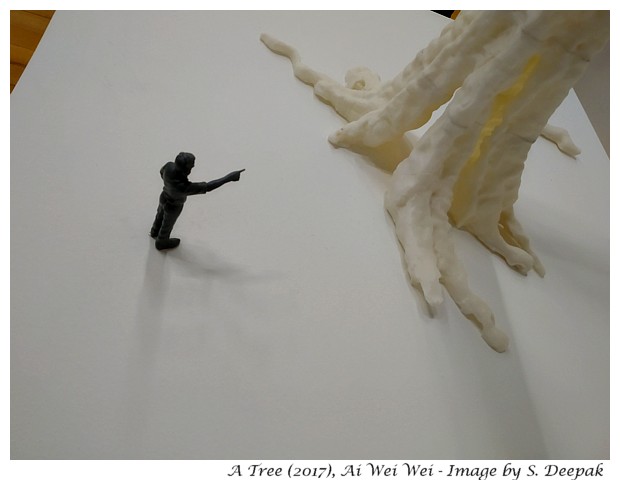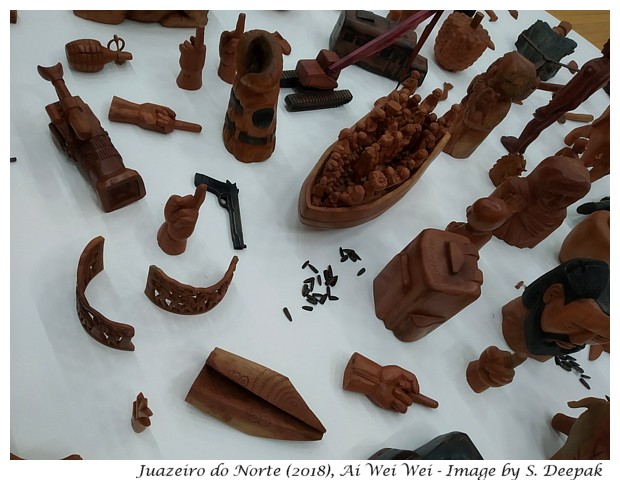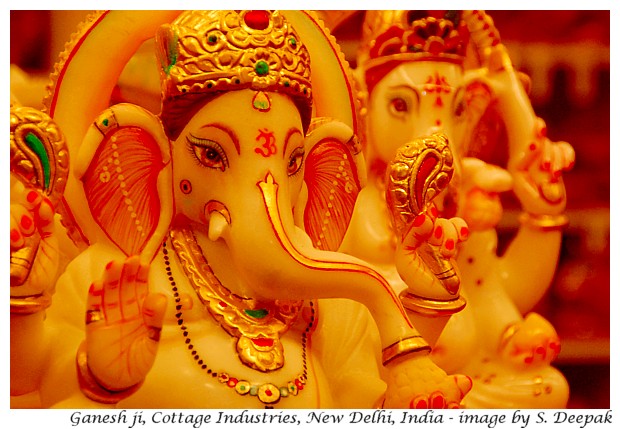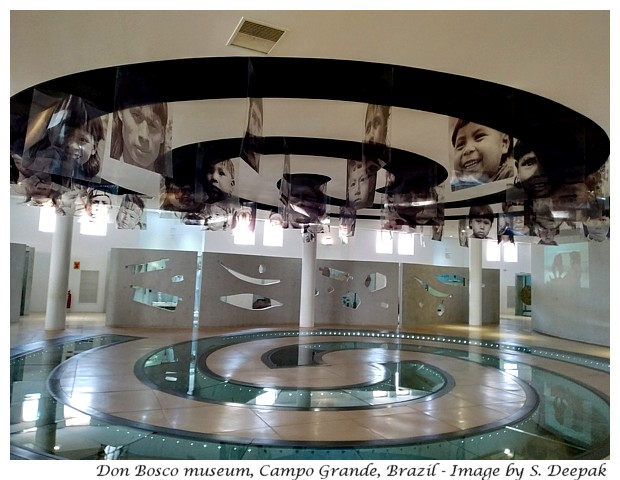In the last 50 years, the situation has changed drastically. Every now and then we hear of infections which do not respond to any medicine. Matt McCarthy's 2019 book "Superbugs: The Race to Stop an Epidemic" is about this subject.
Use of Antibiotics in Livestock
The first use of antibiotics in the livestock was approved by the Federal Drug Agency (FDA) of USA in 1951. They started to be used in small amounts in concentrated animal-feeds for growth promotion and prevention of diseases among the farm animals, especially in the poultry and cattle destined for meat production. They helped chickens, pigs and livestock to grow faster and put on weight. Since then, the use of antibiotics in the industrial production of meat has become routine.Eating this meat introduces those antibiotics in our bodies and in the environment, promoting drug resistance in the bacteria. Already in 1969, a British committee of experts had concluded that the use of antibiotics in animals was contributing to antibiotic resistance in humans. Thus we are aware of this problem for a long time. However, its importance was under-estimated.
Apart from the use of antibiotics in the livestock, another problem has been indiscriminate use of antibiotics. Many doctors prescribe antibiotics for viral infections, even when they know that these are not useful. There is no control on the sale of antibiotics in many countries, so that people can buy them without prescription.
Antibiotic resistance and resistant bacteria both travel around the world, passing from one country to another. Thus, it is global problem affecting everyone and no one is safe from it.
Over the past decade, numerous cases of infections non responding to any medicine and leading to death of persons have brought this subject to the attention of general public. Extremely resistant cases of diseases like tuberculosis have appeared and are widely feared. The World Health Organisation has already issued some catastrophic warnings and asked for urgent search for solutions.
Matt McCarthy's Book
McCarthy's book on the subject of superbugs is written in an extremely engaging style. He works at the Presbyterian Hospital in New York, where they try to identify new antibiotics which can treat resistant infections. He explains the difficulties of treating superbugs through stories of individuals who turn up in the emergency department of his hospital. Reading the theories of antibiotic resistance is very different from reading about someone who has this infection.For example, the story of a person, whose diagnosis of cancer has devastated his family. When it seems that chemotherapy might save him, a minor infection suddenly takes him close to death, unless the doctors can find some new treatment to treat it, but it is not responding to any medicine. McCarthy's book has a series of these real-life inspired stories, which start as a character sketch of the persons and their families and then reach a sudden turn of random events which turn their lives upside down, showing the fragility of our lives.
Once I started this book, I didn't stop reading it till 4 days later when I finished it. While I have known about superbugs and the problems of antibiotic resistance for a long time, the book explained the different challenges associated with it. Mixing of scientific information with human stories makes it very interesting. The book mainly moves around the human trials of a new antibiotic called "Dalbavancin" or Dalba. It also mentions some other new medicines and the persons involved in their research but most of its stories are of persons on whom Dalba is being tried.
Over the decades, doctors engaged in research for new medicines have not always behaved in an ethical manner. Recently, I was reading about an unethical research done by Armeur Hansen, who is known as the person who had discovered the leprosy bacillus in 1873. McCarthy shares the details of inhuman and unethical research done in the Nazi camps. Then he tells about another research carried out in Tuskegee, Alabama (USA), where hundreds of black men and women were recruited in a research, given false information and denied treatment which could have easily cured them, so that the doctors could study the natural evolution of the sexually transmitted infection syphilis. This had happened in 1950s-60s, years after the Nazi experiments.
The book also touches on the world of Big Pharma. For many years, I was part of a group fighting for people's right to health. In these groups, multinationals and especially the Big Pharma, is seen as villain, as they look only at their profit margins and are uncaring of the poor persons' need of medicines. McCarthy's book avoids painting the drug companies in black and white.
For example, McCarthy's explanation about insufficient research on new antibiotics and the role of the big Pharma is in the following terms:
Dr. Anthony Fauci, director of the National Institute of Allergy and Infectious Diseases at the National Institutes of Health, is the man responsible for establishing federal funding priorities for research on antibiotic resistance, and he told me that developing new drugs is, in fact, one of his top priorities. But the situation is complicated. “You don’t want the federal government to be a pharmaceutical company,” he said, “because you’d have to build an entire industry, and that would divert away from what the government does well, which is scientific discovery and concept validation. We need a partner.”
And that partner, for better or worse, is Big Pharma. “If the federal government tried to re-create Merck,” Fauci said, “it would cost billions of dollars. The expertise of production, filling, packaging, and lot consistency. People take that for granted, but that’s an art form that has been perfected by these companies, not the government.”
The problem, ultimately, is that many antibiotics are not very profitable. When a new drug emerges from an idea, there’s a step-by-step process that costs upward of a billion dollars to bring it to market. If that leads to Viagra, the expense is justified because you’ve just made a multibillion-dollar drug. With an antibiotic, however, the profit margins are narrow because of three characteristics: they’re usually given in short courses, they’re prescribed only when someone is sick, and sooner or later even that terrific new antibiotic is going to develop drug resistance. The latter is not a matter of if but when. “The incentive to make major investments in antibiotics,” Fauci told me, “is not something that attracts the pharmaceutical industry, so how do you get around that?”
Apart from his skills as a clinician and researcher, McCarthy also has a way with the words. For example, he introduces Tom Walsh with the following words:
Walsh is a wisp of a man, pale and thin like a potato chip, with deep-set eyes, a warm smile, and a surprisingly firm handshake. His modest features are a notable contrast with my own: I have a high forehead, broad shoulders, and a nose that’s slightly too large for my face. We make for an odd pair.
Conclusions
I love reading books about health and medicine. These give an overview of the issues in a way which is impossible in the medicine textbooks, which limit themselves to dry facts - symptoms, diagnosis and treatments. On the other hand, a good book on medicine aimed at general public, provides a glimpse into its history and how our understanding about the disease condition changed over a period of years or decades.For example, I have been really impressed by a couple of books on psychiatry and autism, which I had read recently - they had opened the doors to a largely unknown world to me. "Superbugs" by Matt McCarthy didn't have the same impact, because I was already familiar with some the ideas and questions it discusses. However, I loved reading it and will recommend it to everyone for gaining a deeper understanding about an important subject, in an engaging way.
Note: In 2019, after writing this post I had contacts with Dr Abdul Gafoor who told me about the WHO initiative on antibiotics resistence and that spread of resistant strains through lack of sanitation was a much bigger contributing factor compared to the irrational use of antibiotics. He referred me to his article in The Hindu, from which the following excerpts are presented below:
"... back in 2010, people like me sincerely believed that AMR was caused primarily by the misuse of antibiotics by the medical community. We all wrote a few lines about infection control, but 90% of our articles, research papers was about irrational antibiotics usage. I did not write about environmental sanitation. I did not write about most of the things that I know today, because that the concept has changed over the last 10 years. At that time, we thought that antibiotic stewardship was the most important component in tackling AMR, along with infection control, and then made a mention of the importance of sanitation. Now if you ask me, what is the most important component of tackling AMR, I will say in a developing country such as India – it is sanitation. I will put sanitation right on top, then I will put in infection control, and then, antimicrobial stewardship, rational antibiotics usage - whether at the hospital or over the counter.
Why? Thanks to scientific evidence that has emerged, since, and changed our perspective. A commentary published in Antibiotics, an open access journal, recently showed that AMR rates were found ‘positively correlated with higher temperature climates, poorer administrative governance, and the ratio of private to public health expenditure.’ When a more complex analysis was done, then better infrastructure (e.g., improved sanitation and potable water) as well as better administrative governance (e.g., less corruption) were strongly and statistically significantly associated with lower AMR indices. And this is significant: the comment stated that ‘Surprising, and contrary to most current beliefs, antibiotic consumption was not strongly associated with AMR levels. This empirical evidence implies that contagion, rather than antibiotic usage volumes, is the major factor contributing to the variations in antibiotic resistant levels across countries.’"
*****
#bookreview #antibioticresistance #mattmccarthy






















































